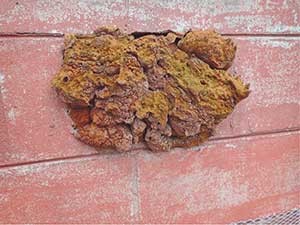Expandable foam is a great household product for quick, inexpensive repairs for air and some water leaks. However, as a crossover product for pest exclusion, it’s not great. It doesn’t weather well, shrinks and crumbles as it dries out, and creates superb pest harborage as it deteriorates.
Many insects, as well as rodents and other animals, are capable of gnawing and clawing and turning the foam into a temporary barricade, at best. Sealing out pests requires penetration points to be closed off with sound, reliable materials. Sheet metal, hardware cloth, concrete, stainless steel wool or copper mesh are a few suggestions.
Patching and sealing penetrations properly is a valuable service pest management professionals (PMPs) can offer to their clients. Assess and evaluate the client’s property for pest penetration points, then propose how you’ll repair the problems. Repairs beyond your skill level should be noted, and a qualified estimate for those repairs should be obtained from a licensed contractor. That way, you’re still a part of the verification process that ensures repairs were completed properly.
As a PMP, you must be a resource for your client. Simply pointing out a hole, documenting its existence and shooting in a little foam is not how it’s done.
You can reach Jeff and Kate McGovern at jeffreymcgovern@mindspring.com.

Leave A Comment